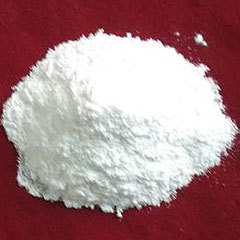An Unimaginatively named Chemistry Problem- Mole Concept.
 Yawn what a boring name
Yawn what a boring name
A 10 gram sample of a mixture of Calcium Chloride and Sodium Chloride is treated with N a X 2 C O X 3 to precipitate the Calcium as Calcium Carbonate. This C a C O X 3 is heated to convert all the Calcium to C a O and the final mass of C a O is 1.62 grams. What was the % by mass of C a C l X 2 in the original mixture?
Note: Report your answer up to 1 decimal place.
The answer is 32.1.
This section requires Javascript.
You are seeing this because something didn't load right. We suggest you, (a) try
refreshing the page, (b) enabling javascript if it is disabled on your browser and,
finally, (c)
loading the
non-javascript version of this page
. We're sorry about the hassle.
3 solutions
Using the molar mass of C a O as 5 6 g/mol, then 1 . 6 2 g of C a O = 5 6 1 . 6 2 = 0 . 0 2 8 9 mol.
Therefore, there is 0 . 0 2 8 9 mol of C a C l X 2 (molar mass = 1 1 1 g/mol) or 0 . 0 2 8 9 × 1 1 1 = 3 . 2 1 1 1 g in the original sample, which is 1 0 3 . 2 1 1 1 ≈ 3 2 . 1 %.
Feed
((((1.62 g) / (CaO molar mass)) * (CaCl2 molar mass)) / (10 g)) * 100
To Wolfram|Alpha.
Step-by-step already written by Siddharth.
That's cheating man! :-/
Log in to reply
How is it different from using a calculator or doing it with paper? I would rather look up MM(CaO) and MM(CaCl2) than approximate it to 56 and 110.
Besides, I wrote that expression. Getting the right expression is what solves the problem (IMHO).
This problem is a cakewalk using the POAC method. There is another way of doing it which is quite algebraic and borders on stupidity.
Let there be x gram of C a C l 2 in the original mixture
We work our way backwards over here, so using POAC :
C a C O 3 ⟶ C a O
Balancing Ca :
Suppose y gram of C a C O 3 produced 1.62 gram of CaO 1 × 1 0 0 y = 1 × 5 6 1 . 6 2 ⇒ y = 5 6 1 6 2
Now we know how much of C a C O 3 was produced by the reaction between C a C l 2 and N a 2 C O 3
So again using POAC
C a C l 2 ⟶ C a C O 3
Balancing Ca again,
1 × 1 1 1 x = 1 × 5 6 0 0 1 6 2 ⇒ x ≈ 3 . 2 1
Therefore % of C a C l 2 in the original mixture=
1 0 3 . 2 1 × 1 0 0 % = 32.1%